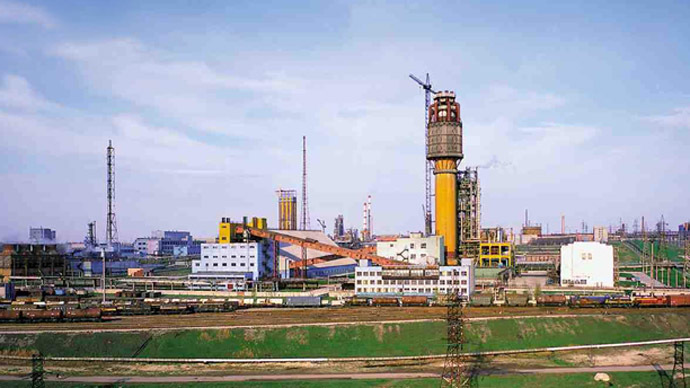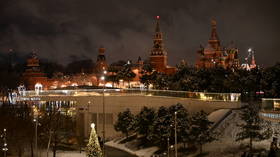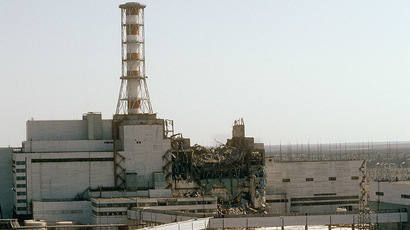'Chemical threat': Disaster looms as Kiev shells fall near Donetsk plant

Ukraine is at risk of an environmental disaster as Kiev’s army continues to bomb the Donestk region, nearly hitting its largest chemical plant that stores lethal agents, the plant’s spokesperson warned. The minimum impact zone would be at least 300 km.
READ MORE: ‘Spreading the truth’: Spanish volunteers join fight against Kiev in E. Ukraine (VIDEO)
For the past three weeks, the Ukrainian army has been intensely shelling Gorlovka, located in Ukraine’s Donetsk region — home to the nation’s largest chemical plant, Stirol.
“Due to the irresponsible actions of the Ukrainian army, citizens of Ukraine, Russia, and Belarus are exposed to a deadly threat from an ecological disaster on a daily basis, the size of which cannot be predicted,” Pavel Brykov, a spokesman for the plant, said in a YouTube message on Sunday.

According to Brykov, an accident at the plant could cause a toxic leak of nitrochlorobenzene – a lethal substance which, if it enters the human body, affects the liver, heart, and bone marrow, causing death.
The minimum impact of the accident would be at least 300 kilometers, Brykov said, adding that the risks of the accident are being silenced in the Ukrainian media.
Stirol is part of the OSTCHEM holding company that belongs to Ukrainian businessman Dmitry Firtash.
Earlier, Firtash claimed there is no risk of a catastrophe since there are no lethal agents stored at the plant. He added that back in May, when the shelling of the region began to intensify, the plant stopped the synthesis and processing of the colorless gas ammonia and evacuated all of its workers.

READ MORE: Ukraine’s violent escalation: From Molotov cocktails to ballistic missiles
In their offensive against the eastern Ukrainian militia, Kiev troops have been using multiple-rocket launchers, such as Grad and Uragan – highly indiscriminate weapons designed for destroying enemy forces in the field. If fired at a city, their lack of precision would likely lead to multiple civilian casualties, increasing the risk of a chemical catastrophe.
Just on Thursday, a unique wooden Orthodox church burned to the ground after being hit by an artillery shell in Gorlovka.

READ MORE: Unique church shelled, burnt to ashes in E. Ukraine (VIDEO)
The ongoing fighting in eastern Ukraine has already led to more than 1,300 people – both civilians and military troops – being killed in the conflict, and over 4,000 others being wounded. At the same time, around 118,000 people have been internally displaced and 740,000 others have fled to Russia.
The Stirol plant was involved in an accident that killed six people and injured 26 others a year ago, when a colorless gas ammonia was released into the air during repair work. The incident was one of the biggest in the country’s recent history.
Ukraine is also the site of the world’s worst nuclear power plant accident in history. The catastrophic nuclear disaster happened on April 26, 1986 at reactor number four of the Chernobyl nuclear power plant in Ukraine, which was then one of the USSR republics. The plant is located near the city of Pripyat, some 100 km north of the capital Kiev.
As a result of the explosion and fire, a huge radioactive cloud was spread into the atmosphere, covering thousands of miles of Soviet and European territories. Approximately 100,000 square kilometers of land were significantly contaminated.
Thirty-one out of the 237 people diagnosed with acute radiation sickness died within the first three months of the accident. Overall, up to 985,000 people have died as a result of the incident, mainly from cancer due caused by the radiation, according to Global Research.
READ MORE: Chernobyl then and now: 28 haunting images from nuclear disaster














